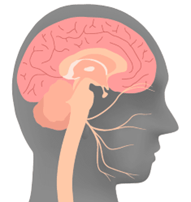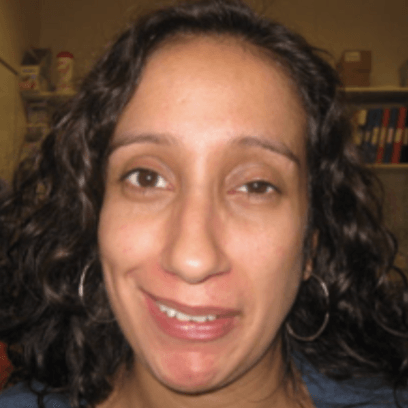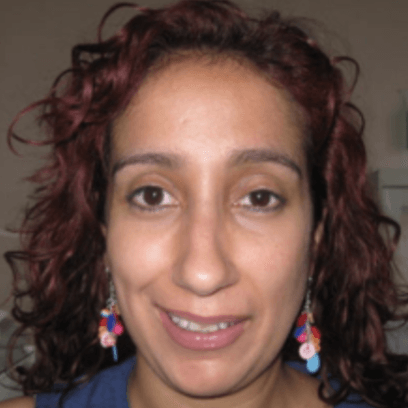Home > Specialist facial therapy
Specialist facial therapy
Why should I start facial therapy early?
There are many benefits to starting facial therapy early. When your nerve is not working or slowly recovering the face quickly develops incorrect movement habits. These can cause long term problems, in particular synkinesis. Research shows that early facial therapy can minimise the risk of synkinesis and improve your facial movement from a much earlier stage of recovery.
Some people are on a waiting list for NHS treatment in the UK and like to have private treatment while they are waiting so they don’t miss out on the benefits of early facial therapy. They then transfer over the NHS when they reach the top of the waiting list. We are happy to work with you in this way.
What if I have had facial palsy for a long time? Can I be helped?
Everyone can benefit from specialist facial therapy. Whether you have had facial palsy for weeks, months, years, or even since birth, facial therapy can still help you greatly. We have treated patients who have had their facial palsy over 20 years and still made excellent improvements.
Can I have private therapy then transfer to the NHS?
All UK based patients are entitled to NHS care. However, we appreciate that waiting lists for NHS care in the UK can be lengthy and that some people need advice and help for their facial palsy more quickly. We are therefore happy to see patients privately to get their rehabilitation started whilst they are on the waiting list for NHS care, then transfer their care over at the appropriate time.

Why can’t I go to a general therapist?
Facial rehabilitation is not taught at university so general therapists do not have specialist expertise in this area. General therapists often teach inappropriate exercises and use inappropriate treatments based on their knowledge of rehabilitation of the body which is completely different to the face.
Specialist facial therapists have done additional postgraduate training in facial therapy to understand how to rehabilitate the face specifically.
Most specialist facial therapists are members of Facial Therapy Specialists International which is a specialist interest group for facial therapists. Our therapists are not only members of this group but also set it up and are on the committee!

When should I start facial therapy?
To get the best recovery from your facial palsy:
If you have had your facial palsy for 4 weeks and have had no recovery at all you should start specialist facial therapy.
If you are slowly recovering but are not fully recovered by 6-8 weeks then you should start specialist facial therapy.

What happened to my nerve?
When you get facial palsy, pressure (usually caused by swelling) squashes the facial nerve and stops signals getting through from the brain to the facial muscles.
A bit like standing on a hosepipe stops the water getting through.
The lack of signals getting to the muscles stops them working causing the face to drop. Once the pressure is removed the nerve signals can flow through again and the face can start to work again.
The facial nerve is like an electrical cable connecting the brain and facial muscles. It has individual fibres (axons) which are wrapped up in bundles and these bundles are wrapped up together to make the nerve.
Nerve recovery falls into 3 categories:
- Neuropraxia
- Axonotmesis
- Neurotmesis
In the first category, neuropraxia, the nerve is temporarily ‘bruised’. The nerve signals are temporarily blocked from getting through from your brain to your facial muscles. If you are in this category, you will notice improvement starting after just a few weeks and will gradually recover further until you are back to normal within 6-8 weeks. If you are recovering quickly, you don’t generally need any facial therapy although some patients like to have a session to help them with understanding their condition and advising them how to best manage symptoms.
In the second category, axonotmesis, the nerve is more badly damaged. The amount of damage can vary from just a few of the individual nerve fibres (axons) being damaged right through to all the bundles of nerve fibres inside the nerve being damaged. However in this category the outer nerve covering is always intact.
It is difficult to know how badly damaged your nerve has been but specialist facial therapy will give you the best chance of making a good recovery.
It is possible that you won’t see any recovery at all until 4-6 months after your facial palsy started. This is perfectly normal and is just the time it takes for the nerve to regrow from the point of injury back out to the facial muscles. Research shows that early facial therapy can minimise the risk of synkinesis and improve your facial movement from a much earlier stage of recovery.
In the third category the whole nerve has been cut, usually due to trauma or a surgical procedure. If you are in this category, you will need a nerve repair followed by post-surgical facial therapy. We can advise further on surgical options if required.
What should I do when my face is floppy?
If your face is floppy, it means the nerve isn’t working. Trying to exercise at this stage is like trying to turn a lamp on and off when it isn’t plugged in at the wall. Completely pointless.
DO NOT EXERCISE AT THIS STAGE
Just rest; protect your eye that won’t close; stretch the eyelid to stop it getting stiff and massage your face to keep the muscles supple. There is lots of advice in our acute facial palsy leaflet which you can download.
Download leaflet
You may be given all sorts of advice about what will help. Please only follow the advice of your specialist facial therapist as incorrect treatments can cause harm and increase the likelihood of long-term problems.
70% of people with facial palsy will get better without needing any treatment. Often people try different treatments and assume the treatment made them better. They tell their friends the treatment helped; they post it on the internet. They’re trying to help but in reality, this wasn’t the treatments helping it was just natural recovery.
For the 70% of people these treatments won’t do any harm but for the other 30% these falsely “recommended” treatments could make things WORSE. This includes electrical stimulation which we do not recommend as it can increase the risk of synkinesis.
What’s involved in specialist facial therapy?
Most patients will work alongside a specialist facial therapist for 12 months to 3 years
Appointments aren’t too frequent because change is slow
Patients learn to become “their own therapist” for the longer term
Most treatment (90%+) is taught by the therapist and then done at home
Once your brain learns something new and important to you it doesn’t forget it – improvements are maintained
It’s never too late to start specialist therapy
Everyone can be helped in some way
If you are interested in hearing about specialist facial therapy in more depth, seeing patient examples and learning more about how specialist facial therapy can help you please view our webinar: Watch on YouTube
Can you help children with facial palsy?
Yes, we can. We are all experienced in paediatric facial therapy and have helped many children, of all ages, over the years. Children’s rehabilitation will change as they get older to suit their understanding and goals.
We also work closely with the charity Facial Palsy UK and have been involved in creating information with them for parents, children and teenagers, as well as being involved in the development of a children’s book to help children and their friends better understand their facial palsy.
Can I have botulinum toxin injections for my facial palsy?
Yes, you can. However it is important to start facial therapy before you have any injections.
Botulinum toxin injections can help when injected into key areas of synkinesis by a facial palsy specialist – this may be a doctor or therapist. Our therapists are all highly experienced in facial injecting. They have also carried out research and been invited to give international lectures on botulinum toxin injecting for facial palsy.
The medication works by reducing the activity of overactive muscles back to a more ‘normal’ level. This allows you to work on relearning precise, correctly coordinated movements while the opposing muscles are ‘quieter’ for a few months. Injections are sometimes given to the unaffected side if it is also overactive.
Botulinum toxin injections should not be given if you have not had a course of specialist facial therapy because injections alone cannot;
- Re-programme the brain with the correct address of the facial muscles
- Retrain the brain about correct movement and suppressing synkinetic movement for long term recovery
- Stretch tight, short, stiff muscles
Before and after botulinum toxin injections and specialist facial therapy

